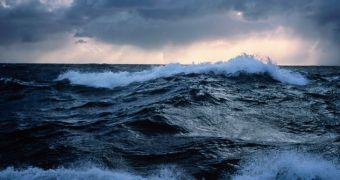A team of researchers led by Old Dominion University and University of Colorado Boulder specialists argue that ongoing sea level rise in the western tropical Pacific Ocean is not due to natural causes, but man-made.
The scientists maintain that, according to evidence at hand, this phenomenon is due to anthropogenic climate change. What's more, they claim that sea level in this part of the world will continue to up in the years to come.
In a paper in the journal Nature Climate Change, the researchers explain that sea level off the coast of the Philippines and northern Australia is now rising at a rate of 1 centimeter (approximately 0.4 inches) per year.
Not too long ago, it was argued that a natural phenomenon known to the scientific community as the Pacific Decadal Oscillation (PDO, for short) alone could explain this ongoing change in sea level in the western tropical Pacific.
PDO refers to regular shifts in water temperature and has been documented to influence not only regional, but also global sea level. Hence the fact that it was blamed for the Pacific Ocean's encroaching on the Philippines and northern Australia.
Information obtained with the help of satellite altimeters and tide gauges and concerning sea level rise in the western tropical Pacific since 1950 until present day indicates that said phenomenon alone does not explain documented changes in seascape.
“The conventional wisdom has been that if the Pacific Decadal Oscillation was removed from the equation this sea level rise in parts of the Pacific would disappear,” researcher Benjamin Hamlington said in a statement.
“But we found that sea level rise off the coasts of the Philippines and northeastern Australia appear to be anthropogenic and would continue even without this oscillation,” the specialist went on to explain, as cited by EurekAlert.
Provided that sea level rise off the coast of northern Australia and the Philippines is indeed man-made, it is safe to assume that, unless efforts are made to curb greenhouse gas emissions and limit climate change, this phenomenon will continue to manifest itself.
According to Benjamin Hamlington and fellow researchers, this is likely to translate into an increase in the frequency and intensity of local storms. “When water starts piling up there and typhoon-like storms are traveling over higher sea levels, it can be a bad situation,” he said.
It is estimated that, for the time being, the global sea level is increasing at a rate of about 3 millimeters (about 0.11 inches) per year. Some believe that, under a business as usual scenario, global seas will stand about 1 meter (roughly 3.3 feet) higher than they now do by the end of this century.

 14 DAY TRIAL //
14 DAY TRIAL //